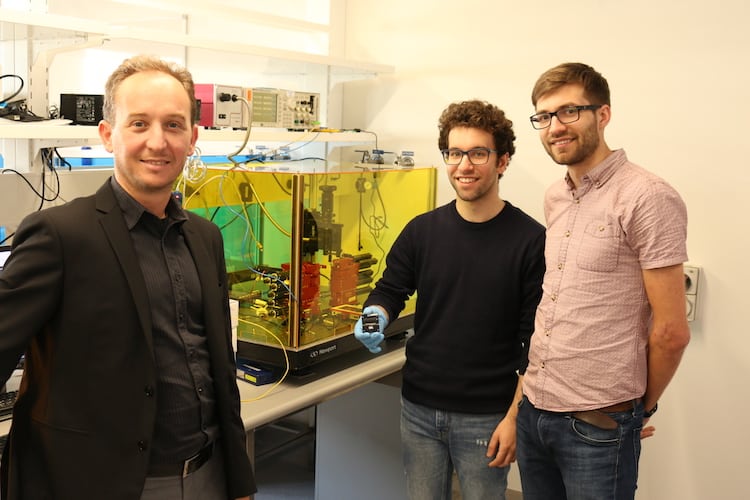Tuneable superconductivity appears in topological insulator
27 Oct 2018 Belle Dumé
Researchers at the Massachusetts Institute of Technology have discovered that monolayer tungsten ditelluride (WTe2) is superconducting at ultralow temperatures despite its very low charge carrier density. And that the state of the material can be electrically tuned from being a superconductor to an insulator. More importantly still, it could be used to engineer Majorana zero modes – a key step towards making a topological quantum computer.
“We recently confirmed in experiments that the insulating phase of monolayer WTe2 is a topological insulator,” explains team leader Pablo Jarillo-Herrero. “This means that it is the first material that can be electrically tuned over a wide range – all the way from being a topological insulator to a superconductor. This makes it an excellent candidate for engineering Majorana modes according to the famous Fu-Kane proposal.”
Special surface electronic states
Topological insulators are materials that are electrical insulators in the bulk but can conduct electricity on their surface via special surface electronic states that are highly robust to noise and disorder. Since they are protected, these states can be useful for engineering Majorana “zero modes”, which could be used as quantum bits (qubits) in topological quantum computers.

Majorana particles (particles that are in fact their own antiparticles) were first predicted by the Italian physicist Ettore Majorana in 1937. These particles obey “non-Abelian” statistics, which means that quantum information encoded in them would be highly resistant to decoherence. Decoherence is one of the main obstacles to overcome when it comes to developing practical quantum computers.
Jarillo-Herrero and colleagues discovered superconductivity in monolayer WTe2 when they were studying its topological insulating phase in a van der Waals field effect transistor made from the material.
WTe2 superconducts at carrier densities of just 5 x 1012/cm2
“In this device, we used boron nitride, which is a dielectric material, and graphite as the gates,” explains Jarillo-Herrero. “We don’t usually expect superconductivity to occur in such a transistor because the carrier density induced by the dielectric gating structure is typically between just 1012 to 1013/cm2 and 2D superconductors require densities of around 1014/cm2. However, we found that when we cooled down our monolayer WTe2 device to ultralow temperatures of less than 1 Kelvin, we observed superconductivity, which is remarkable.”
The result is unequivocal he says: “Monolayer WTe2 superconducts at carrier densities of only about 5 x 1012/cm2. And this is how we observe a transistor-like (reversible) electrostatic on/off switching of superconductivity in the material.READ MORE

“Why it superconducts at such low densities remains and open and interesting question, however, and is something for the condensed matter theory community to answer.”
“Excellent material for studying Majorana physics”
The devices could be used to make highly controllable superconducting nanodevices, including photodetectors that make use of sharp superconducting transitions, he tells Physics World. However, what is really exciting to us is the possibility of realizing the first topological quantum computer from them.
“Our results are reported in two Science papers, one published this week and another earlier this year. The work clearly suggests that monolayer WTe2 could make an excellent material for studying Majorana physics. Creating new devices in which the Majorana modes indeed occur is an obvious but significant next step in our study. Another direction is to explore other types of 2D materials that also boast similar topological properties.”
28/10/2018 from physicsworld.com

Δεν υπάρχουν σχόλια:
Δημοσίευση σχολίου